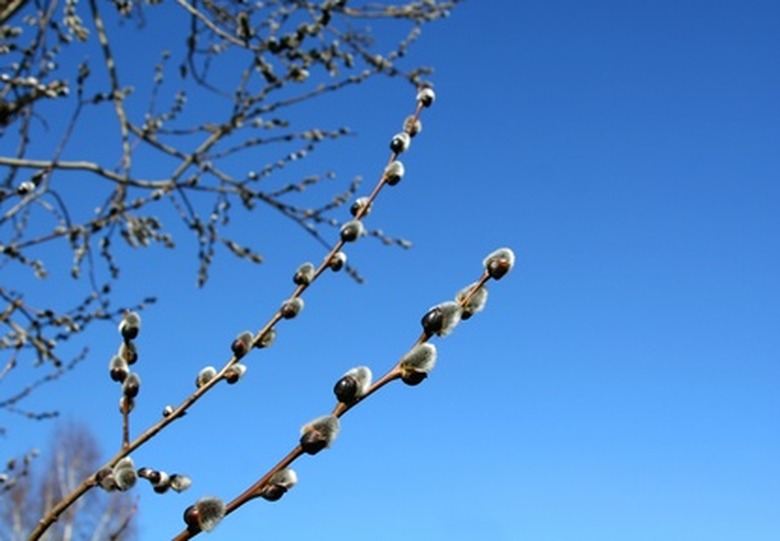How To Identify Different Willow Trees
Approximately 40 species of willows reach the size of trees in North America, and telling one from another requires some specific willow knowledge. Willows need moist soil, and tend to grow near water. You will often encounter willow trees forming dense thickets along streams. Willow trees all feature short-stemmed leaves that grow in an alternate fashion on twigs. To identify different willow trees, observe the trees meticulously.
Step 1
Assess the height of the willow tree. Different willows grow to different sizes. A black willow can grow to 40 feet tall, while the peachleaf willow of the Great Plains may be as tall as 60 feet. The weeping willow, a familiar ornamental from China, can be 70 feet high. Many willow trees, such as the pussy willow, are no larger than tall shrubs.
- Approximately 40 species of willows reach the size of trees in North America, and telling one from another requires some specific willow knowledge.
Step 2
Examine the length and width of the leaves of a willow tree to determine its species. Measure the leaves carefully; remembering that sometimes as little as 1/2 inch in size can help you identify a species. The Mackenzie willow has leaves that seldom are longer than 4 inches, while the sandbar willow has leaves that typically reach 6 inches in length. Most willow leaves are narrow, with some more narrow than others. Black willow leaves are under 1 inch in width, but those of a red willow are around 1 1/2 inches wide.
Step 3
Inspect the shape of the leaves of the willow tree. Most are lanceolate, meaning they have an elongated appearance with a rounded base. The leaf tapers to a point, similar to the head of a spear. However, some willows leaves defy the norm for the species. Bebb willow leaves are oblong and lack a narrow tapered end, although they possess a point. The Scouler willow of the Rocky Mountains and Pacific Coast has oval rounded leaves.
- Examine the length and width of the leaves of a willow tree to determine its species.
- Black willow leaves are under 1 inch in width, but those of a red willow are around 1 1/2 inches wide.
Step 4
Study the flowers of the willow tree. Willows are dioecious, with male flowers on one tree and female flowers on another. The flowers differ in appearance between species. The flowers of the peachleaf willow are 3 inches long and full of yellow, hair-covered scales, hanging from the trees in the spring. The flowers of weeping willows are green and just an inch in length. The flowers of the pussy willow develop before the leaves do in late winter or the first weeks of spring. They are blackish with fine white hairs.
- Study the flowers of the willow tree.
- The flowers of the peachleaf willow are 3 inches long and full of yellow, hair-covered scales, hanging from the trees in the spring.
Step 5
Look at the bark on the trunks. Determine the color and check the texture. Many willows develop ridges and furrows in the bark as the tree grows. Black willow becomes very scaly and the bark turns nearly black, giving the species its name. Bebb willow bark on a mature tree is rough and gray. Weeping willow bark possesses long, deep ridges and is a shade of gray on the old trees.
References
- Ohio Department of Natural Resources: Black Willow
- "National Audubon Society Field Guide to Trees, Eastern Region"; Elbert Little; 2008
- "Field Guide to Trees of North America"; C. Frank Brockman; 1996
